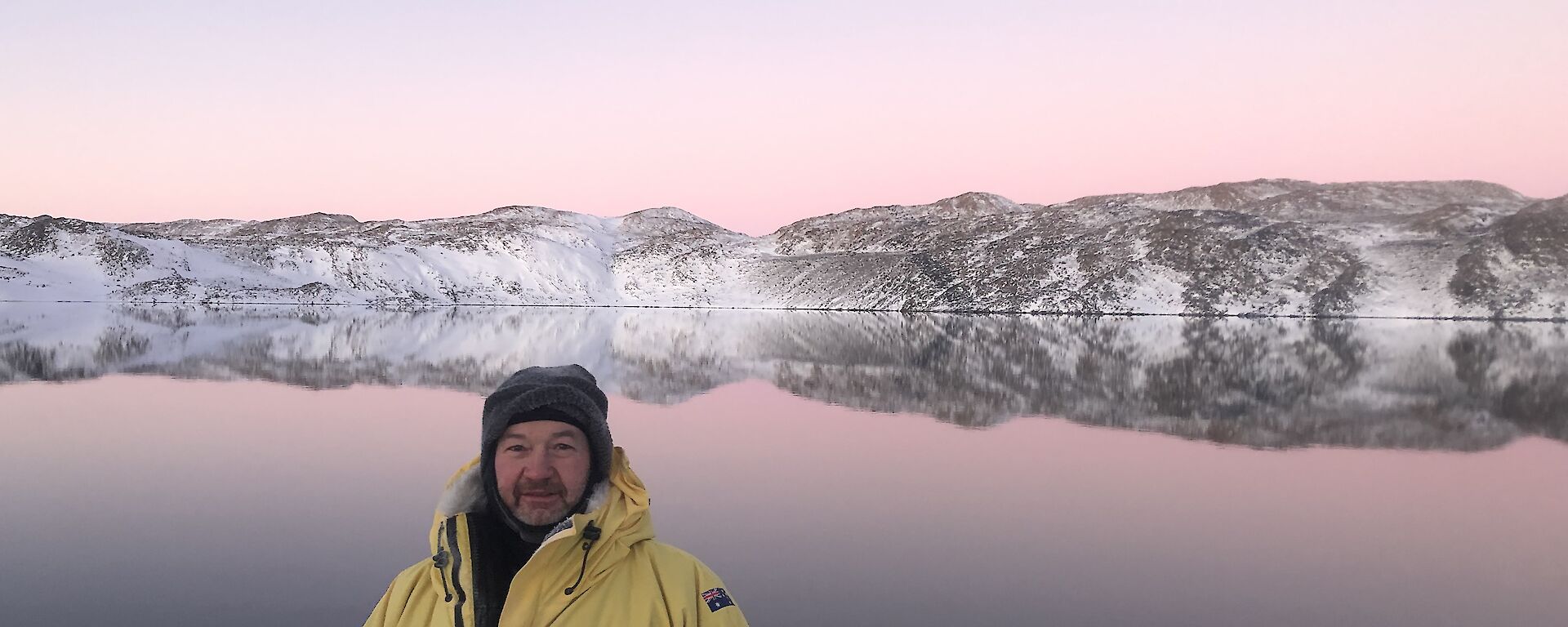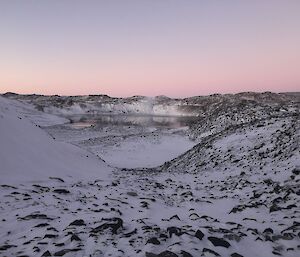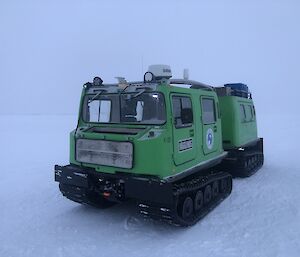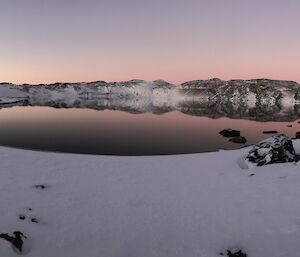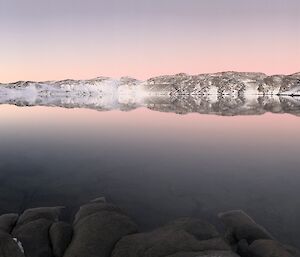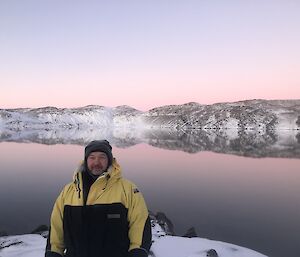It was the usual urge to get off station to see the sights, and an opportunity to “do science”, that started the conversation and trip planning to venture out to Deep Lake. Deep Lake is a picturesque lake located in the Vestfold Hills close to Davis Station. It has the unique feature of not freezing during the bitter Antarctic winter, while providing amazing reflected surfaces for great photography. The lake is approximately 50 metres below sea level with a high saline content that lowers the freezing temperature to a point where it remains liquid, even at -30 degrees Celsius ambient.
Due to bad weather the previous weekend, the Davis Midwinter swim was rescheduled to the Saturday of our adventure. So after a bracing swim and a warm shower, the team gathered our survival packs and headed off in the stalwart winter transport of the Antarctic, the Hägglund. Four intrepid expeditioners headed out onto the sea ice, destined for Brookes Hut, our lodgings for the night and departure point for Deep Lake. A hearty meal of re-heated frozen lamb shank and rice by candle light, followed up with a few blocks of chocolate for dessert dealt with the hunger pangs and sugar cravings. A couple of hours spent chatting and telling stories found all ready to turn in after a long day, but one last check outside revealed a stunning Aurora light show that even the bright full moon couldn’t outshine. Cameras quickly came out and some great shots were captured.
The next morning brought cold, clear conditions and a brisk -24 degrees Celsius. As the sun does not rise at this time of year we waited until it became a bit lighter to travel, then repacked the Hägglund and headed off for Deep Lake. The route chosen had not been travelled this year, which required what is known as 'proving' as we progressed. Proving consists of drilling the sea ice at regular intervals to measure its thickness and prove it suitable for vehicle travel. Minimum is 600mm or 60cm for a Hägglund, though thicker than that is preferred. Our course led through some tricky sections of rafted ice (ice pushed up in sections) which required frequent drilling to ensure it was safe. A successful navigation ensued, which resulted in the team arriving safely at the starting point of our hike to Deep Lake through the snowy Vestfold Hills.
Survival packs on, buddy checks done and a final radio call back to station to let the Station Leader know of our intentions, expected return and a quick weather update. A slight breeze was present and glancing out to the ice plateau revealed the strengthening winds stirring up the snow that was predicted for the station later that evening. Confident they were still a long way off we departed for Deep Lake in good spirits and company for an easy 40 minute hike through the beautiful hilly setting. Cresting the final rise Deep Lake was revealed, situated at the bottom of a gently sloping rocky valley dusted with snow. A short easy downhill walk was all that was left to arrive at our destination.
On arrival we had a quick meal, and I mean quick! After only a few minutes in the cold air, apples freeze and cheese sandwiches becomes like chunks of wood! Nuts and chocolate are always winners. Due to very little water content they can be consumed in all temperatures. Lunch done, it was time for science: lake water levels and water temperature (-14 deg C) were measured and recorded, continuing many decades of continuous observation of this amazing location. Cameras and phones came out for some fantastic shots, with the light and still conditions perfect for the sought-after reflective photos. A final look around taking it all in and preserving the memory, and off we headed, back to the faithful Hägg for the return journey to station and a much appreciated warm shower and meal.
Paul Hunt
Electrician

